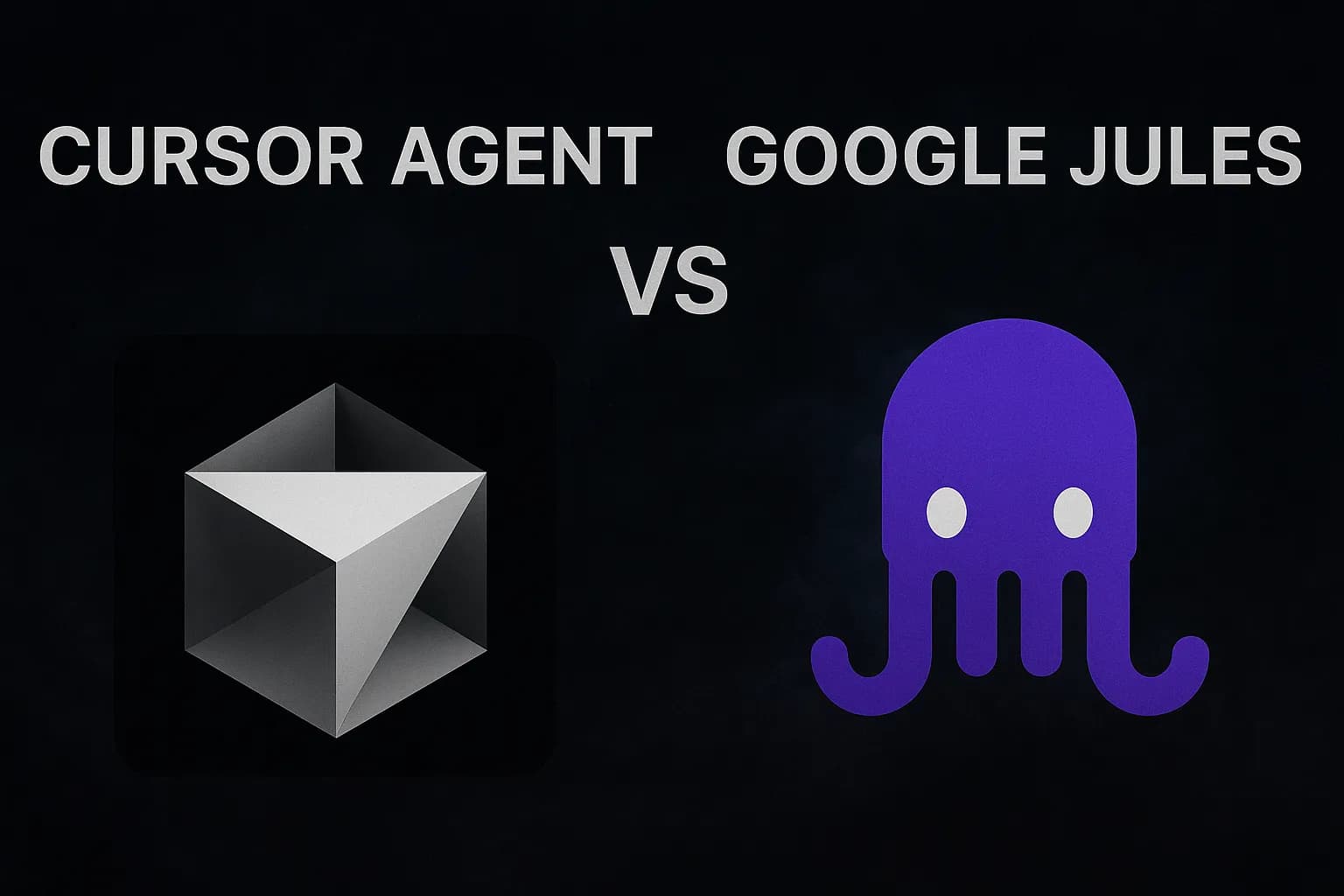
- Published on
Cursor Agent vs Google Jules
- AUTHOR
 Labh KhatkeDeveloper
Labh KhatkeDeveloper
Choosing your AI coding sidekick? The buzz is all about Cursor and Google's Jules. Both promise to supercharge your workflow, but they are fundamentally different. The whole Cursor Agent vs Google Jules debate boils down to one critical feature that reveals their core philosophies. It’s not just a minor detail—it’s a completely different way of thinking about how AI should help you write code. Let's get into it.
Pair Programmer vs. Delegated Engineer
At its heart, the difference is about your core relationship with the AI. Cursor Agent acts like a super-powered pair programmer. It lives inside your IDE, working alongside you interactively. You're always in the driver's seat, guiding it and reviewing changes instantly. Google Jules, on the other hand, is an autonomous engineer you delegate tasks to. You hand off a bug, and it works independently in a secure cloud environment. This philosophical split is central to the Cursor Agent vs Google Jules comparison.
The Game-Changer: Visual Verification
So, what's that killer feature? It's Jules's ability to visually verify frontend changes. Since Jules runs your codebase in a secure virtual machine (VM), it can do something an integrated tool can’t. Imagine asking it to fix a tricky CSS bug. Jules doesn't just edit the code; it spins up your dev server in the VM, renders the webpage, and takes a screenshot to confirm the button is actually aligned. This multimodal feedback loop—literally seeing the results—is a massive leap. Cursor Agent is great at running terminal commands and parsing test logs, but it operates blind, trusting that passing tests means the UI is correct. Jules doesn't have to trust; it can look.
What This Means for Developers
This distinction has huge practical implications. For interactive, multi-file refactoring where you want tight control and quick iterations, Cursor's collaborative approach shines. But for fixing visual bugs or implementing UI mockups where the visual output is key, Jules’s see-and-do method is unparalleled. Essentially, choosing between Cursor Agent vs Google Jules comes down to the task at hand.
So, who wins this showdown? It depends on the AI partner you want. A collaborator sitting next to you, or an independent teammate to delegate work to? Cursor offers fantastic interactive integration, while Jules provides powerful, hands-off autonomy. The Cursor Agent vs Google Jules decision rests on your workflow. But for frontend development, Jules’s ability to visually confirm its work is a true game-changer.
For this blog, Mystify Tech used generative AI to help with an initial draft. An editor verified the accuracy of the information before publishing.
Subscribe to our newsletter
Get notified when we publish new content. No spam, unsubscribe at any time.
